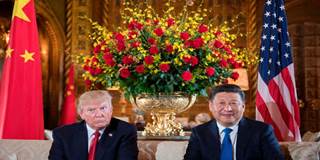Ahead of the meeting between Donald Trump and Xi Jinping at the G20 summit in Buenos Aires, it is hard to be optimistic that a meaningful breakthrough between the US and China is at hand. But an agenda of substance should be used as a checklist against any accord that the two leaders might reach.
NEW HAVEN – With charges flying back and forth between the United States and China ahead of the eagerly awaited December 1 meeting between President Donald Trump and President Xi Jinping at the upcoming G20 meeting in Buenos Aires, resolving the conflict has taken on great urgency. The alternatives pose grave risks for both countries: an ever-escalating trade war, a cold war, or even a hot war. These risks can be avoided, but only if both leaders are willing to engage in principled compromise.
There is no question that a serious conflict has been building for a long time. Contrary to the US narrative, the problem is not the outsize bilateral trade deficit between the world’s two largest economies. That is largely an outgrowth of macroeconomic imbalances that afflict both sides: China saves too much and the US saves too little. These saving disparities give rise to multilateral trade imbalances that cannot be resolved by bilateral efforts.
The US had merchandise trade deficits with 102 countries in 2017, whereas China had trade surpluses with 169 countries in 2016. Squeeze one part of the multilateral imbalance for a deficit country or a surplus saver, and it simply gets allocated to other trading partners. For the US, this would lead to higher-cost imports – the functional equivalent of a tax hike on consumers. For China, it would spell increased export penetration into other markets.

NEW HAVEN – With charges flying back and forth between the United States and China ahead of the eagerly awaited December 1 meeting between President Donald Trump and President Xi Jinping at the upcoming G20 meeting in Buenos Aires, resolving the conflict has taken on great urgency. The alternatives pose grave risks for both countries: an ever-escalating trade war, a cold war, or even a hot war. These risks can be avoided, but only if both leaders are willing to engage in principled compromise.
There is no question that a serious conflict has been building for a long time. Contrary to the US narrative, the problem is not the outsize bilateral trade deficit between the world’s two largest economies. That is largely an outgrowth of macroeconomic imbalances that afflict both sides: China saves too much and the US saves too little. These saving disparities give rise to multilateral trade imbalances that cannot be resolved by bilateral efforts.
The US had merchandise trade deficits with 102 countries in 2017, whereas China had trade surpluses with 169 countries in 2016. Squeeze one part of the multilateral imbalance for a deficit country or a surplus saver, and it simply gets allocated to other trading partners. For the US, this would lead to higher-cost imports – the functional equivalent of a tax hike on consumers. For China, it would spell increased export penetration into other markets.